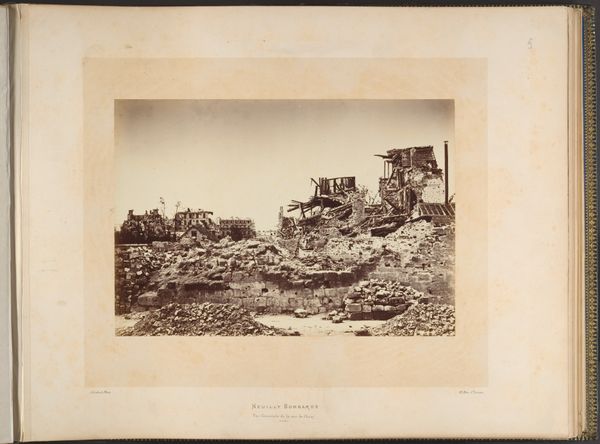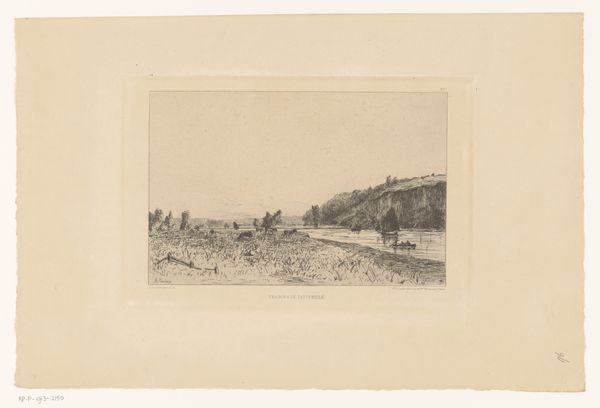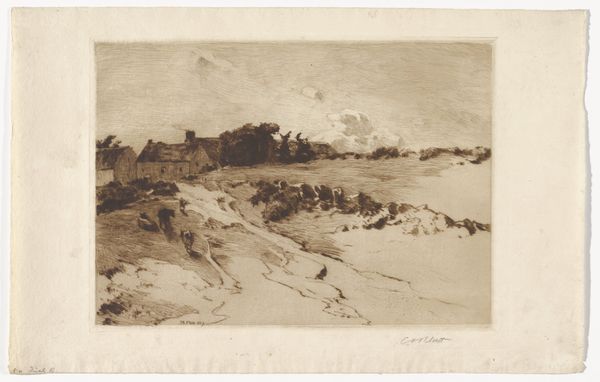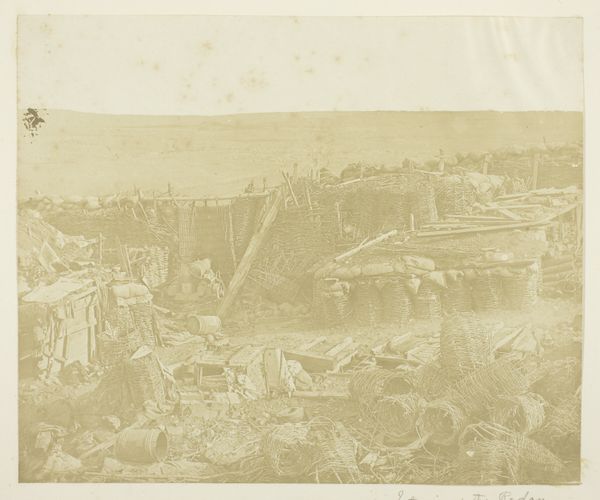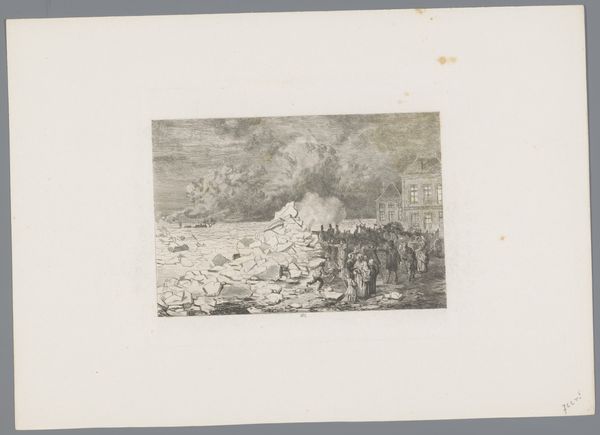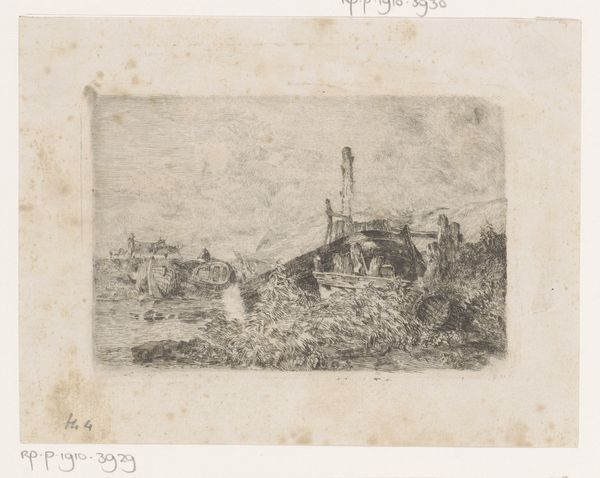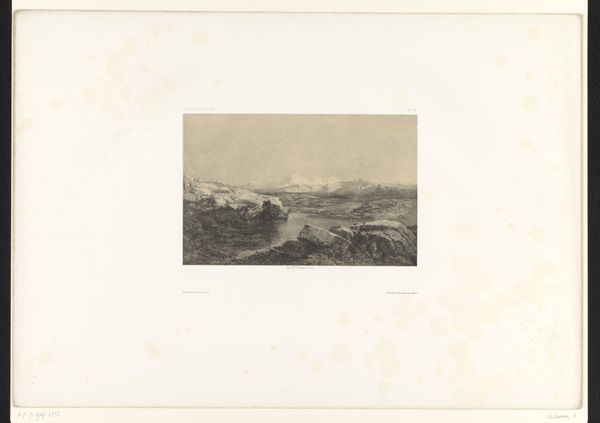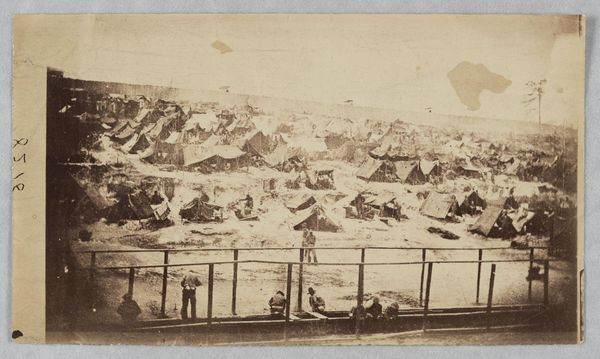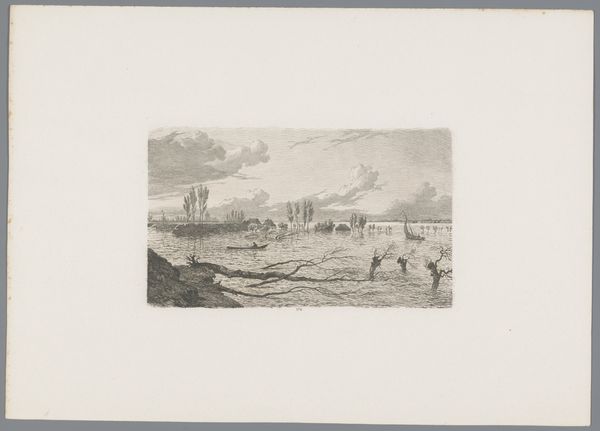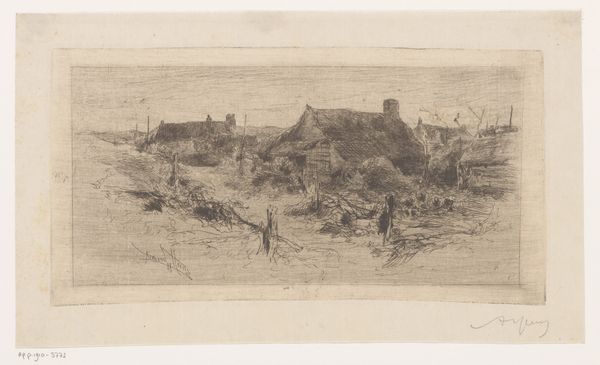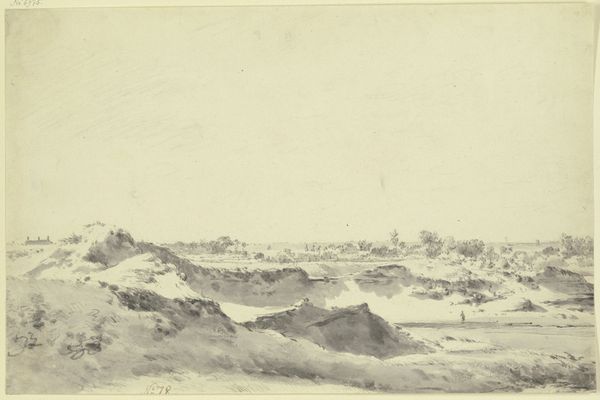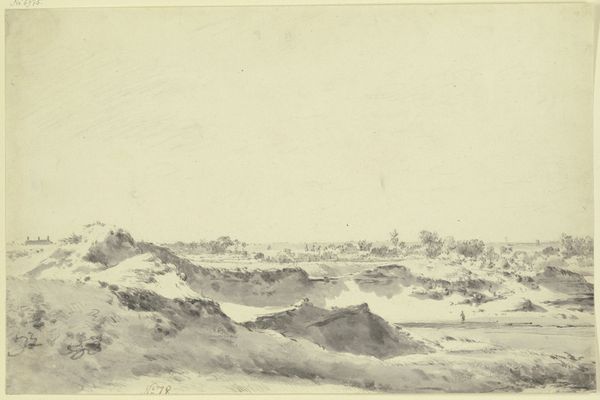
drawing, ink
#
drawing
#
ink painting
#
dutch-golden-age
#
landscape
#
ink
#
cityscape
#
genre-painting
Dimensions: 3 3/4 x 6 in. (9.5 x 15.2 cm)
Copyright: Public Domain
Curator: This drawing, subtly rendered in ink, is titled "View of a Village ('Wasschout'?)" by Jan de Bisschop, and it's dated sometime between 1648 and 1671. Editor: It's quite minimal, isn't it? Very earthy, a kind of monochrome wash that almost feels like a memory rather than a solid depiction. Curator: The limited palette really draws attention to Bisschop's mark-making. The way he uses ink wash creates depth and texture with just a few strategic strokes. You can almost feel the weight of the ink on the paper, particularly in the foreground. Editor: True, the composition definitely directs my eye towards the lower section, with that darker ink pool maybe symbolizing water reflecting a rather ordinary village life. I wonder how the villagers related to this depiction, seeing as Bisschop seemed to capture the essence of their social reality, and probably had some patrons from within it. Curator: Precisely, the drawing speaks to a growing trend during the Dutch Golden Age, particularly the market for these sorts of genre scenes and landscape views. We know he drew inspiration from artists like Pieter de Molyn, incorporating drawing conventions familiar to audiences of the time. What would they have thought about his approach? Were these materials easily obtainable for local, not very wealthy artists? Editor: He's certainly simplifying things – perhaps pointing to a societal yearning for the rural ideal as life grew more complex. He probably aimed to capture some local values and the simple pleasures of rural existence, presenting a certain rustic identity for buyers and art consumers of his era. It prompts questions about social hierarchies and how they played out even in landscape art. Curator: And what's fascinating is that despite his references, it retains a spontaneity; he’s made his artistic labor nearly invisible, right? These efficient sketches must have played a certain social role, maybe even a performative element of virtuosity in rendering these scenes swiftly on demand. Editor: Good point. It reflects how art then actively served in building and promoting notions about communities and how deeply these ideas seeped into everyday visuals, all framed by historical dynamics, commercial interests, and material constraints, of course. Curator: Exactly! Jan de Bisschop’s "View of a Village" offers us not just a picture of a place but a perspective into a period. Editor: Yes, this tiny glimpse encapsulates large historical forces at play while hinting at production techniques. A potent intersection indeed.
Comments
No comments
Be the first to comment and join the conversation on the ultimate creative platform.
